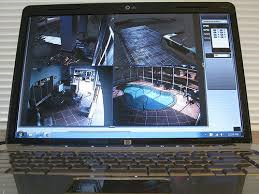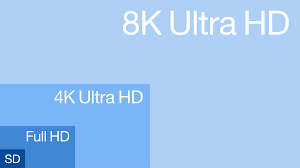Security Camera Resolutions Explained
Compare Camera Resolutions and See the Difference!
Page Table of Contents-
Introduction
Image Resolutions
Video Resolutions
Final Thoughts
Explain Cameras Resolution
Security Camera Resolutions Introduction-
Image resolution, the size or detail captured, is different than video resolution which is more of the layout than the . They both fit on the same screens. Yet one is typically stretched or altered to fit a full screen view. Still images use the term mega pixel to emphasize how good a camera is.  This is just one variable of a good camera, but lets keep on track…Mega pixels are the pixel(1) to the millionth degree. Yes, 1,000,000 pixels, well for the most part. Physical real world components sometimes fail to meet the paper data twin that exists. So a camera with 5MP would have near 5 million of em.
This is just one variable of a good camera, but lets keep on track…Mega pixels are the pixel(1) to the millionth degree. Yes, 1,000,000 pixels, well for the most part. Physical real world components sometimes fail to meet the paper data twin that exists. So a camera with 5MP would have near 5 million of em.
So What Does A Pixel Do For Ya?
A pixel is a segment that is controllable. It is the smallest single visible element of a digital picture or sometimes a display. Its a word that came from ‘picture’ and ‘element’ put together (pix-el). It can be made to change intensity and color, and along with millions of adjacent pixels changing and controlled together, they all assemble the picture from a raster image.
For all the footage you may rack up, digital video files have data that well, forms a box. This box has a vertical dimension, and a horizontal dimension. When a specification states up to 1920 X 1080 resolution, it is actually one thousand and eighty pixels across the data box we talked about. This would fit in the HD category which has two main residence, they are 720P and 1080P.
Image Resolution-
Take a look at this image in different resolutions and notice the aspect ratio also.

256×256 – 65,000 pixels and not much to talk about concerning picture quality. Notice the aspect ratio is 4:3. If it was a 16:9 image the graininess would be unbearable.

640×480 – Low end of acceptable image resolution. This is common in basic web images or your lowest quality camera settings.

1216×912 – This is gets us into the millions-of-pixels neighborhood. Very good image quality for everyday life.

1600×1200 – Nearly 2 million pixels, this factor is considered a ‘High Resolution’ quality. This is the beginning of ‘professional’ quality imaging.

2240×1680 – This resolution is the standard on many of today’s digital cameras. It is equates to nearly 4MP’s of image goodness.
4064×2704 – This gets up there with the 10MP to 20MP cameras.
Video Resolution-
Even More Terms with Video! Aspect Ratios
Earlier and yet some still today, security camera resolution was of a format that is analog. Aspect ratios of 4:3 were mainly used as the prime resolution. It is good quality for video, but of course things can always be better, so it has been slowly replaced by its dominant digital children also known as HD.
How Many TVL?
Count Like Pixels
Each rating in resolution has an equivalent TVL value. So a 1080P resolution rating would give you 1920TVL due to its 1920 pixel count across the horizontal direction.
TVL stands for “Television Lines” and it is thought of as the counting of rows each pixel is seated. Every camera and DVR can handle a different rating for which its built. On the low end we have 400TVL. In the middle of the range is D1. D1 is basically a 540TVL signal. There are many TVL values depending on how the camera is designed. It may even be a HD camera and have 1920TVL. 960 is the number of horizontal pixels as a result of the CCD image sensor. 960H is the best resolution available for analog CCTVs, and gives 30% more image resolution than the D1 standard. The greater the resolution, the higher the definition of your footage, and the better zooming and detail you have for evidence. A 960H DVR must be used to get the most resolution from the whole system if it is analog based.
With previous D1 DVRs, although you may have a 650TVL analog camera, you can only record at D1 resolution which can clearly discern only up to 540TVL. This is a result of processing and compression within the video software. With the new 960H DVR, not only can it capture high-resolution 700TVL cameras, but it can also enhance the recording quality of the existing cameras as its full resolution of up to 700TVL will be realized.
The CCTV resolution scale looks like:
400TVL
D1
650TVL
700TVL
960HTVL
SD (Standard Definition) 640 x 480 4:3 480p
Video resolution jargon will group together a bunch of other terms all trying to describe to width and height that all the captured footage would lay on edge-to-edge. For video they tend to like to think of it as a frame. If you take 1080P and put it with say 1920, so a video frame of 1920 x 1080, would have 1920 pixels up horizontally and 1080 pixels up and down. So with that in mind, notice when you divide 1920 by 1080 you get 1.7777 infinite. OR you get a fraction better known as 16 over 9, yes, 16:9. This is the wide screen format used today. It also has 720P, and recently 960P, included in the wide screen format but it is not considered ‘Full’ HD until 1080. Picture definition and quality from 720P and 960P are almost indistinguishable from 1080P.
So Video Thinks In Boxes
The newest levels are 4k and soon 8k video resolution. This is yet another expansion of the pixels per box theory. It is actual more like 3840 pixels, but its considered 4k.
So video security resolution is really a aspect ratio thing. It has mega pixel cameras and it also has the DVR/NVR dictating a final format or aspect ratio it can handle. Anyways please read up on what your buying and determine it is right for your needs.
HD (High Definition 1280 x 720 16:9 720p
Full HD 1920 x 1080 16:9 1080p
4K UHD 3840 x 2180 16:9 4K
Final Thoughts-
Have a Wide Screen Monitor To Fill?
I hope this helped you understand some key ingredients of camera resolution and Security Camera Resolutions. So really it comes down to cameras and recorder ability. The security camera will be rated in MP’s for the amount of image pixel resolution it can deliver. And the other side is the DVR with its ability to relay a Analog 4:3 ratio or can it deliver ‘FULL HD’ 1080p or 4K UHD? Please read up on anything your interested in and remember the returns are Hassle-Free so if something isn’t just how you envisioned it, send it back. Check out the Multiple Channel Security Systems page for side by side, er.. top to bottom in this case, images of the common formats for video resolution. Thanks for visiting Camera Security Reviews.
or can it deliver ‘FULL HD’ 1080p or 4K UHD? Please read up on anything your interested in and remember the returns are Hassle-Free so if something isn’t just how you envisioned it, send it back. Check out the Multiple Channel Security Systems page for side by side, er.. top to bottom in this case, images of the common formats for video resolution. Thanks for visiting Camera Security Reviews.

